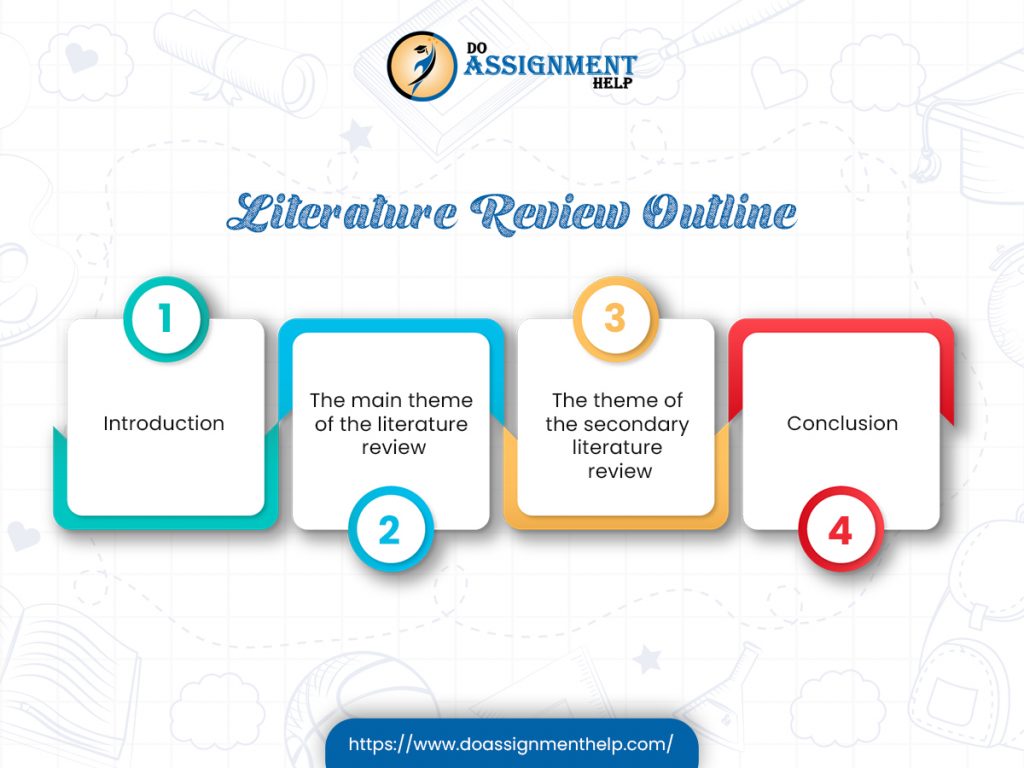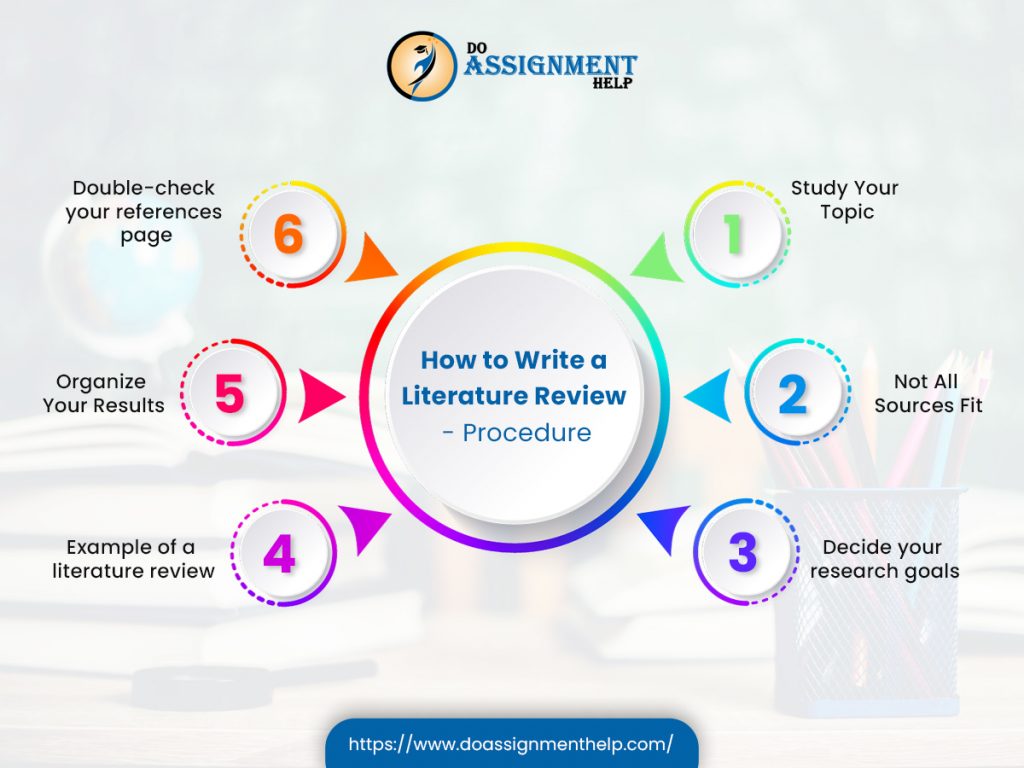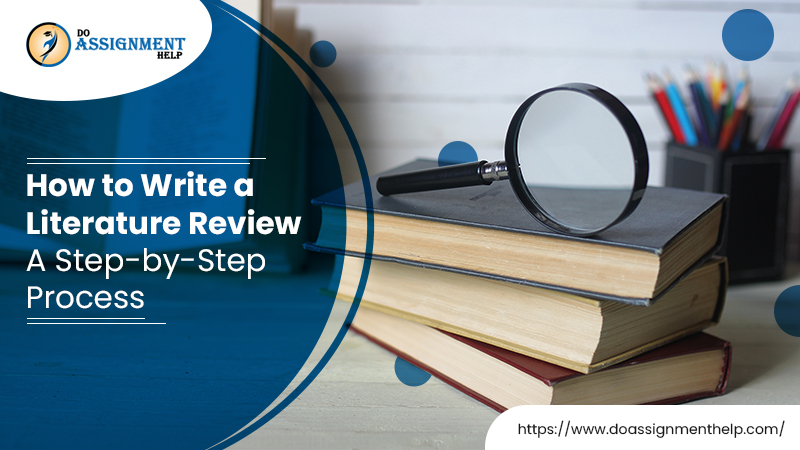If you are a student and don’t know how to write a literature review, then this blog is for you. However, you must first comprehend what a literature review is to start writing one. A literature review is a summary of the research that has already been done in a particular field of study. A literature review is a crucial step in every research project since it is used to assess and summarize previously published material on a subject. In this blog, we are going to share how to write a literature review, what it is, and its complete structure. So, what are you waiting for start reading!
Table of Contents
What is a Literature Review?
When you want to know how to write a literature review you should always consider the primary task that came before it or the previous course materials that led to this specific task. Simply put, a literature review is a sort of academic writing in which you must provide analysis, synthesis, and evaluation of the literature that is currently accessible on your topic, a prompt, or a predetermined topic. If you want to completely define the meaning of your literature review, you should give a thorough evaluation of the material that is already available. Don’t forget to use a plagiarism checker to examine your writing.
Regardless of your academic standing, your paper’s format, or the kind of subject you’re tackling, you must accomplish the following research goals:
1. A review of the literature pertinent to your area of study must be provided. Making this a thorough investigation of your issue will demonstrate your understanding of how specific pieces of information might fit into a larger body of study. Discuss the significance of the findings and offer your perspective, supported by facts, quotations, or any other kind of proof.
2. All the information that is available must be combined into a unique summary in which you look for connections or information that supports your thesis statement or information that pertains to your primary subject or study area. Don’t forget to clearly define your goals and describe how a particular publication either succeeds or fails in achieving those goals.
3. A critical study of the data you find is an essential component of any literature review that is successful. This is the precise time to discuss any gaps or contradictions you see based on your knowledge. It is advised to debate theories that have been put forward and exercise critical thinking when considering particular points of view. Ideas should be developed, processed, and looked for areas that need more investigation and study. In essence, it is what a literature review is about.
4. One of the most crucial things to remember when you learn how to write a literature review is to keep everything organized around a specific concept.
What Length Does a Literature Review Have?
If you want to know how to write a literature review then you should know the right length of the same. It will always rely on the audience you are trying to target, the academic level, and your intent. The majority of literature reviews in thesis papers and dissertations will be at least twenty pages long. However, the essay you must write for your term paper may only be a few pages long.
Why Write Literature Reviews?
Before beginning a fresh analysis of research on how to write a literature review, the main goal of a literature review is to become familiar with the accomplishments and data offered by the current study connected to a particular topic. It implies that to weigh the benefits and drawbacks of your issue, you must learn as much as you can about an existing body of study. As you research and draft your dissertation or thesis, it can be helpful to know how to approach things in the future and what problems might arise.
Literature Review Outline
Before you begin writing a literature review outline to know how to write a literature review, be careful to decide what kind of technique you want to employ by looking through the potential samples we have provided above. Continue using the following outline once this section is complete:

1. Introduction
a) Describe your objectives for your issue by describing how it connects to your course or study, why research is vital, and the types of data you want to employ.
b) You need to be clear about the sorting or approach that will be applied. Giving your readers more background on what they will see is beneficial.
c) In some circumstances (thesis paper, dissertation writing), a thesis statement or an assumption may be required.
2. The main theme of the literature review.
a) Book-based discussion on your theme or subject.
b) Sub-themes where you focus on specific aspects of your research.
1: (Question for research)
2: (Participants)
3: Your Results
3. The theme of the secondary literature review.
a) A slightly different strategy for examining books and other sources that offer distinct kinds of sample data. You must go over everything.
b) Sub-topics that focus on particulars and look for similarities or distinctions.
1: (explains your search criteria and techniques).
2: discusses the advantages and disadvantages of how everything has been presented.
3: is a comparison of your research.
4. Conclusion:
a) Concluding remarks.
b) Outline the downsides and upsides of your conclusions.
b) Recommendations for additional research.
5. References
a) A reference list that includes all of your sources.
a) Any further appendix data that may be required.
How to Write a Literature Review – Procedure
In conclusion, let’s go over the procedures that must be followed when creating a literature review:

Study Your Topic
It’s one of the most crucial tasks you have to complete before beginning a literature review if you are looking for the right answer to the question of how to write a literature review. The key is to study your subject beforehand and make every effort to focus your research because it is typically done as part of a larger project. You’ll benefit from concentrating on books, journals, and other resources that are relevant to your specific goals. To avoid trying to cover a wider range of research literature that may be permitted for your chosen subject, you must talk to an academic advisor about your worries and reservations.
Not All Sources Fit
Keep in mind that you must use credible academic sources that have undergone peer review while conducting a literature review. Using books that you buy in print or online Assignment Help is secure. You must consult academic journals found in Google Scholar, Jstor, Pubmed, or any other relevant databases. This means that unless you specifically want to research that kind of information, employing something that has been published on a blog will not make for a trustworthy literature review. Consider the techniques you will use to give a piece of evidence when you investigate your issue as you choose your sources.
Decide your research goals.
Your literature review is more than just a list of books and other sources where you explain what you might learn in each specific scenario. The outlines and examples provided show that your literature review must have specific research objectives.
Example of a literature review
Organize Your Results.
Once you’ve formed the other sections and determined your study objectives, it’s one of the most crucial stages you’ll need to take. Each item should be organized by your methodology, with each body section’s explanation drawing on parallels or other key considerations. Remember that if you think it’s important for better comprehension or to provide your source more credibility, your literature review should include some basic information about the author.
Double-check your references page.
Do not overlook this section and be sure to verify everything again. You must include a complete list of references at this point. If you have used any in-text citations, start by reviewing them. It’s typically advised to utilize two or more for each submission. You must provide detailed information about your findings as well as supporting documentation. Ensure that every citation you use, including any paraphrased passages, is correctly cited and formatted in your references list. To make sure nothing is overlooked, double-check all the spacing and structure issues using your style guidelines.
Important Considerations for How to Write a Literature Review
We’ve reached the end of our guide to writing a literature review, but there are still some crucial points to keep in mind. Ten key guidelines that will be essential when you do a literature review are as follows:
- Establish your topic and target audience first.
- Spend some time initially reading and researching the available literature.
- Don’t forget to take notes as you do your research.
- Investigate similar reviews of the literature on your topic.
- Maintain concentration, but go over any relevant ideas you think are crucial.
- Don’t forget about structural elements and keep your writing in a critical format.
- If required, give a brief history of each entry.
- To learn more, see other internet reviews.
- Incorporate your research while remaining impartial.
- To provide information in a balanced manner, pick both old and recent studies.
Summing Up:
Most essential, keep in mind the risks of plagiarism and always include the proper citations and details to assist your readers in locating each source. You may succeed and create a fantastic literature review paper that will stand out from the crowd by adhering to these easy criteria!
 Santa Clara, CA 95050
Santa Clara, CA 95050 





